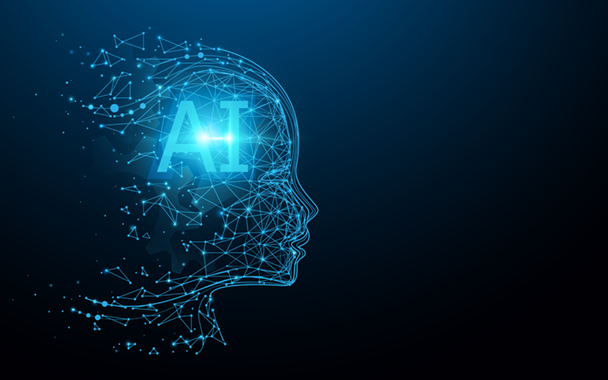Intellectual PropertyIP Enforcement
Patentability of Artificial Intelligence Generated Inventions

Introduction
Artificial Intelligence (AI) is rapidly progressing day by day and has become one of the biggest trends of the present world. It has impacted almost everyone’s day-to-day lifestyle in every corner of the world. The growth of AI has nearly changed our lives and how we engage with the world across electronic devices like smartphones, speakers, televisions, self-driving cars. AI has also become ingrained in other fields such as biotechnology, astute education, online payments, money transfer, etc. One of the issues that arose relates to the patentability of AI-generated inventions. If patented, who will be the owner of the invention developed using little or no human help by AI? And because of the same, AI has caught the attention of policymakers and the judiciary. In this article, we will be discussing the basics of AI and gradually move towards looking at some of the rules and regulations developed globally for the cause of the patentability of AI.
What is Machine Learning?
To understand the global aspects of patenting AI, first, one must understand what is machine learning. After knowing about machine learning one can understand the criteria adopted by different countries in defining the method of patentability of Artificial Intelligence. Machine-learning algorithms use statistics to find patterns in massive amounts of data. Data encompasses a lot of things—numbers, words, images, clicks, etc. If something can be digitally stored, it can be fed into a machine-learning algorithm.[1] Different services that we use utilises this concept, like the suggestion recommendations on Netflix, YouTube, Spotify, etc. One of the simplest examples is Instagram. You may have noticed many a time that if you look for something on google, watch any show or search for any item, Instagram starts showing you related posts and reels. Now that happens because each platform collects data from the links you visited, shows you watched, and by using machine learning it suggests things that you would be interested in. Then there’s another subfield of machine learning known as deep learning, which gives the machines the ability to find and amplify even small algorithm patterns. The neural network, which is created from the inner workings of the human brain, comes next. The nodes function similar to neurons aid in the transmission and reception of even the slightest patterns, just as the human brain does. There are basically three types of machine learning algorithms: Supervised Learning, Unsupervised Learning, and Reinforcement Learning.[2]
What is Supervised learning?
Supervised learning, also known as supervised machine learning, is a subcategory of machine learning and artificial intelligence. It is defined by its use of labeled datasets to train algorithms to classify data or predict outcomes accurately.[3] As input data is fed into the model, it adjusts its weights until the model has been fitted appropriately, which occurs as part of the cross-validation process.[4] For example, it helps you to sort out spam from your inbox in a different folder.
What is Unsupervised Learning?
Unsupervised machine learning algorithms infer patterns from a dataset without reference to known or labeled, outcomes. Unlike supervised machine learning, unsupervised machine learning methods cannot be directly applied to regression or classification problems; because you have no idea what the values for the output data might be, making it impossible for you to train the algorithm the way you normally would. Unsupervised learning can instead be used to discover the underlying structure of the data.[5]
What is Reinforcement Learning?
Reinforcement learning is the training of machine learning models to make a sequence of decisions, in another word the agent learns to achieve a goal in an uncertain, potentially complex environment.[6] In this AI faces a somewhat game-like situation, like to reach another level you keep trying until you get the right way to win that game, this is also similar to that the AI uses trial and error method to reach a solution.
Patentability of Artificial Intelligence Generated Inventions
Now that we have understood machine learning and its various subsets, we will investigate the aspects that different countries and organisations consider for the patentability of an AI-generated invention. As we all know applying for patent protection for computer-based inventions comes with many risks, if an invention only improves the working of the computer and doesn’t tie to any practical application, then there can be a significant risk the patent office will most likely reject the application based on the ineligible subject matter.
According to the United States Patent and Trademark Office (USPTO) 35 U.S.C. § 101: Whoever invents or discovers any new and useful process, the machine, manufacture, or composition of matter, or any new and useful improvement thereof, may obtain a patent thereof, subject to the conditions and requirements of this title.[7] It says that mathematical models and algorithms are non-patentable but if that algorithm shows any ties with practical application, then they are deemed patentable. European Patent Office (EPO) has also issued new guidelines regarding the patentability of AI stressing that invention must have a technical purpose in a specific field.[8] For example, using a neural network for identifying irregular heartbeat will have a necessary contribution to qualify as a patentable subject matter.
In India, we have an absolute ban on the patentability of algorithms and computer programs unless it produces a technical effect or technical contribution which will be difficult to establish in an AI-related invention.[9] According to Section 3(k) of the Patent Act, 1970, mathematical and business methods, computer programs per se, or algorithms are categorised as a non-patentable subject matter.[10]
‘Inventive Step’ requirement is almost similar in most jurisdictions. For obtaining the patent right, the patent practitioner needs to convince the examiner that the invention is not obvious from just reading the prior documents.[11]AI inventions face the hurdle that, if a problem was solved previously by simple mathematical analyses, using a Deep Learning (DL) or Machine Learning (ML) system will not overcome an inventive step objection.[12]
According to the Japan Patent Office (JPO), AI guidelines a minor modification in the algorithm using machine learning or deep learning to achieve a better result is just viewed as a routine upgrade unless it shows that this method is never applied before.[13] For example, if cancer levels were previously detected by measuring the levels of two markers, A and B in cells, using a ML system that uses training data related to the levels of marker A and B to do the same would not count as an inventive step. However, if an additional component, such as cell size, were added to the training data, this would count as an inventive step as the previous measurement criteria did not include this parameter.[14]
Case Study
For the first time in this AI-operated world, an AI has been named as an inventor and given a patent. In Thaler v Commissioner of Patents (2021) 160 FCA 879, the Australian Federal Court decided to given an AI the status of an inventor. This case has overturned the decision made in Stephen L. Thaler (2021) APO 5.
Dr. Stephen L. Thaler filed a patent numbered 2019363177, wherein he named an AI software, DABUS created by him as the inventor. Further, he named himself as the Assignee, Applicant, and Legal Representative in the application. The patent was related to a container for food products.
The application was rejected as there is no clear definition of an ‘inventor’ in the Australian Patents Act. Although when the Act came into force in 1991, there is no ounce of doubt that by inventor it meant natural persons only. Moreover, it was noted that Section 15 of the Australian Patents Act relevantly provides that a patent can only be granted to a ‘person’ who is the inventor or a ‘person’ who derives title to the invention from the inventor.[15]
This was challenged by Dr. Thaler in the Australian Federal Court, which overruled the decision made by the Delegate of the Commissioner of Patents. The Court’s judgment was based on the following three arguments:
Firstly, it considered the word “inventor” with its ordinary meaning i.e., an agent noun. An agent can be a person or a thing thereby allowing an AI to be treated as an inventor. Also, an outdated definition should be discarded and evolved definitions should be considered. Secondly, the Court considered Section 15(1)(b) which provides that a patent may be granted to a person who would, on the grant of a patent for the invention, be entitled to have the patent assigned to the person.[16] Lastly, the Court also considered section 15(1)(c) which provides that a patent may be granted to a person who “derives title to the invention from the inventor or a person mentioned in paragraph (b)”[17]
Conclusion
In conclusion, patenting of an AI is a complex process. Many countries and organisations have issued specific guidance on AI patenting, but many more are yet to do so. As we compared different aspects of patentability of various nations and organisations, most of them had focused on the advancement in the invention by machine learning and how it is technically and practically different and beneficial from others.
The world is gradually getting dependent on AI-generated inventions and escalating fast towards the future world. Looking into the importance of AI-generated innovations, patent law institutions, and offices must look for a more advanced and easy way for granting patent rights to the invention produced by artificially intelligent machine.
Citation:
Siddharth Mishra & Saksham Tyagi, Patentability of Artificial Intelligence Generated Inventions, Metacept-Communicating the Law, accessible at https://metacept.com/patentability-of-artificial-intelligence-generated-inventions/
[1] What is machine learning?, Massachusetts, available at: https://www.technologyreview.com/2018/11/17/103781/what-is-machine-learning-we-drew-you-another-flowchart/.
[2] Patenting Considerations for Artificial Intelligence in Biotech and Synthetic Biology – Part 2: Key Issues in Patent Subject Matter Eligibility, Boston, available at: https://deepsense.ai/what-is-reinforcement-learning-the-complete-guide/.
[3] Supervised Learning, available at: https://www.ibm.com/cloud/learn/supervised-learning.
[4] Ibid.
[5] Unsupervised Machine Learning, Boston, available at: https://www.datarobot.com/wiki/unsupervised-machine-learning/.
[6] What is reinforcement learning? The complete guide, Poland, available at: https://deepsense.ai/what-is-reinforcement-learning-the-complete-guide/.
[7] The United States Patent and Trademark Office, Report on 35 USC § 101: Statutory Requirements and Four Categories of Invention, (August 2015).
[8] European Patent Office (EPO), Guidelines for Examination, (March 2021).
[9] Lynn Lazro, India: Artificial Intelligence In The World Of IP, mondaq, (2020), available at: https://www.mondaq.com/india/patent/892134/artificial-intelligence-in-the-world-of-ip#:~:text=Artificial%20Intelligence%20(AI)%20in%20the,left%20some%20open%2Dended%20questions. (Last visited May 2, 2021).
[10] The Patents Act, 1970.
[11] Essenese Obhan and Joyita Deb, Patenting AI Inventions: Best Practices From Around The World, mondaq, (2020), available at:
[12] Ibid.
[13] Japan Patent Office, Patent Examination Case Examples pertinent to AI-related technologies, (March 2019).
[14] supra at 11.
[15] World First Australian Court Rules a Machine Can be an Inventor | Thaler v Commissioner of Patents [2021] FCA 879, available at: https://www.gestalt.law/insights/world-first-australian-court-rules-a-machine-can-be-an-inventor-thaler-v-commissioner-of-patents-2021-fca-879(Last visited August 13, 2021).
[16] Ibid.
[17] supra at 17.





